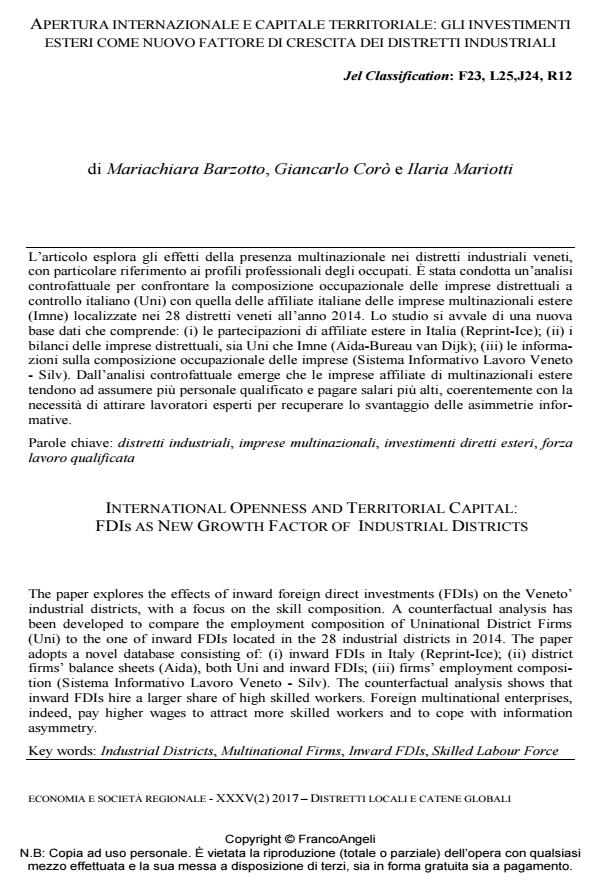International openness and territorial capital: FDIs as new growth factor of industrial districts
Journal title ECONOMIA E SOCIETÀ REGIONALE
Author/s Mariachiara Barzotto, Giancarlo Corò, Ilaria Mariotti
Publishing Year 2017 Issue 2017/2
Language Italian Pages 11 P. 65-75 File size 396 KB
DOI 10.3280/ES2017-002006
DOI is like a bar code for intellectual property: to have more infomation
click here
Below, you can see the article first page
If you want to buy this article in PDF format, you can do it, following the instructions to buy download credits

FrancoAngeli is member of Publishers International Linking Association, Inc (PILA), a not-for-profit association which run the CrossRef service enabling links to and from online scholarly content.
The paper explores the effects of inward foreign direct investments (FDIs) on the Veneto’ industrial districts, with a focus on the skill composition. A counterfactual analysis has been developed to compare the employment composition of Uninational District Firms (Uni) to the one of inward FDIs located in the 28 industrial districts in 2014. The paper adopts a novel database consisting of: (i) inward FDIs in Italy (Reprint-Ice); (ii) district firms’ balance sheets (Aida), both Uni and inward FDIs; (iii) firms’ employment composition (Sistema Informativo Lavoro Veneto - Silv). The counterfactual analysis shows that inward FDIs hire a larger share of high skilled workers. Foreign multinational enterprises, indeed, pay higher wages to attract more skilled workers and to cope with information asymmetry.
Keywords: Industrial Districts, Multinational Firms, Inward FDIs, Skilled Labour Force
Jel codes: F23, L25,J24, R12
Mariachiara Barzotto, Giancarlo Corò, Ilaria Mariotti, Apertura internazionale e capitale territoriale: gli investimenti esteri come nuovo fattore di crescita dei distretti industriali in "ECONOMIA E SOCIETÀ REGIONALE " 2/2017, pp 65-75, DOI: 10.3280/ES2017-002006